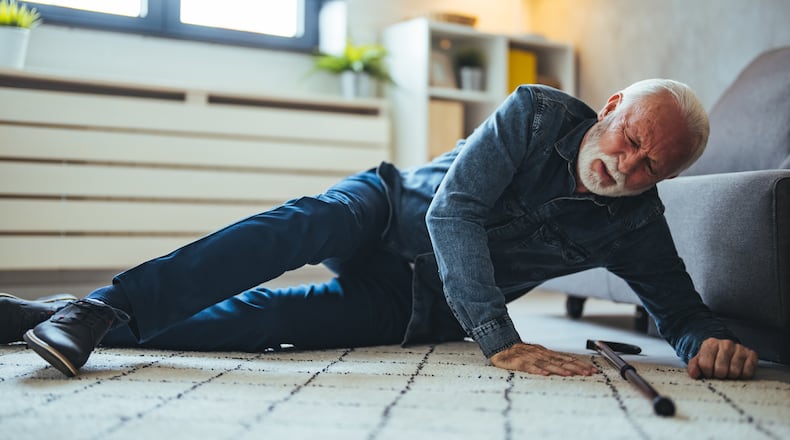Tripping and falling does not have to be an inevitable part of getting older.
According to Tesha Smith, an injury prevention coordinator with Kettering Health, a fall risk assessment with a healthcare provider can assess each individual’s risk factor based on balance, leg strength, chronic health conditions and a questionnaire about living habits.
“Falls are the leading cause of fatal and non-fatal injuries in our older adult population. At Kettering Health Main Campus, older adult falls is the number one mechanism of injury for our trauma patients,” she said. “If you’ve fallen once, the likelihood of falling again can be significant.”
An at-home evaluation can be done with the aid of a family member, and includes the “sit to stand” test (stand and sit five times in a specific timeframe) and “timed up & go” test (stand from a seated position, walk 10 feet, turn around and return within a specific timeframe). Smith notes that the Centers for Disease Control (CDC) also offers the Stopping Elderly Accidents, Death, and Injuries (STEADI) program.
“Most falls that we see come into our emergency department take place in the home,” Smith said. “It’s important to make the home environment as safe as possible.”
- What can a senior citizen do to keep themselves from falling?
- Evaluate your home for any trip hazards, such as clutter on the floor or slippery rugs
- Remove area rugs
- Make sure carpet is secured firmly to the floor
- Fix any loose stair steps, banisters or handrails
- Replace any burnt out light bulbs to ensure adequate lighting
- Add night lights at the floor level throughout the house
- Visit the eye doctor regularly to address any vision changes
- Assess whether grab bars need to be added in the bathroom
- Consider exercises to improve strength and balance
- Be mindful and aware when pets are nearby (add a bell to their collar if needed)
Smith also advises keeping frequently used objects at arm’s length, using assisted walking devices as directed and ensuring a proper fit (do not use other people’s devices), being aware of uneven walking surfaces, and knowing if any medications cause dizziness or drowsiness.
“Often, people may experience a fall, and then become scared to move, which then increases the likelihood of another fall,” she said. “Sometimes, seniors who have fallen may not want to tell their family members because they’re worried about losing their independence and causing concern.”
Seniors must also speak up and be their own advocate. One of the best ways to maintain strength and balance is to stay active, even if it is light activity. Many area health centers, YMCAs and recreation centers offer balance and strength classes geared toward senior citizens.
“There are two main things that we emphasize to seniors and their families: 1) most falls are preventable and 2) Falling is NOT a direct result of aging,” Smith said. “People may lose strength and balance, but it is not gone for good – it can be regained and seniors can still live fulfilling, active lives.”
For more information, visit cdc.gov/steadi/index.html.
About the Author

